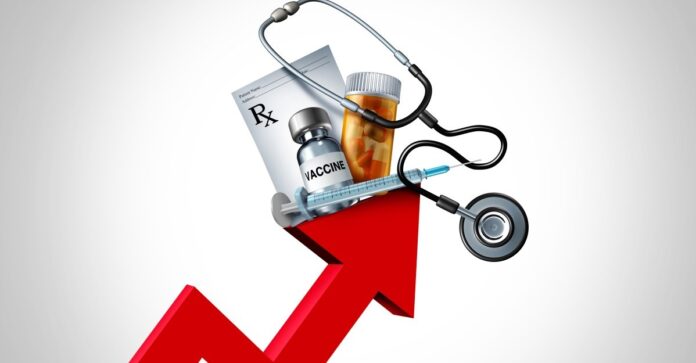Open enrollment season is upon us, bringing with it a familiar wave of anxiety and confusion. Navigating acronyms like HMOs, PPOs, FSAs, and HSAs feels like deciphering an alien language, but one thing is crystal clear: your health insurance premiums are likely going up again. This trend isn’t confined to employer-sponsored plans or the Affordable Care Act marketplaces—even Medicare beneficiaries aren’t immune to rising costs.
While healthcare expenses have been steadily climbing for years, recent increases have begun to outpace historical trends. Julie Rovner, KFF’s chief Washington correspondent, notes this concerning acceleration. “We’ve had larger spikes in inflation, particularly in the early 2000s,” she explains, “but for about fifteen years now, healthcare costs have been rising, but not terribly fast. They seem to be picking up again.”
So what’s fueling this surge? Rovner pinpoints two core drivers: price and utilization. Utilization simply refers to the amount of healthcare services people use—and right now, that number is climbing steadily for several reasons.
The Aging Population and Post-Pandemic Backlog
The graying of America plays a significant role. As the baby boomer generation ages into their senior years (since 2010), they naturally require more medical attention. Compounding this trend is the backlog of care delayed during the pandemic. During lockdowns, many routine checkups and elective procedures were postponed out of necessity or fear. Now we’re seeing a surge in demand for both essential and previously deferred care, leading to increased utilization.
New Treatments Drive Costs Upward
Beyond these demographic shifts, advancements in medical technology are simultaneously expanding our treatment options and driving costs higher.
- GLP-1 drugs, initially developed for diabetes, have become incredibly popular weight-loss solutions, adding to overall healthcare spending.
- Surgical procedures are becoming less invasive and more readily accessible thanks to technological improvements, leading more individuals to opt for previously daunting interventions.
The Price Problem: A Unique U.S. Challenge
However, perhaps the most alarming factor is the sheer cost of these services. Unlike many other developed nations that heavily regulate healthcare pricing, the United States allows providers to set their own rates with minimal government oversight. This lack of price control results in exorbitant costs for medical procedures and pharmaceuticals, leaving Americans grappling with a system that seems designed to punish those seeking necessary care.
As Rovner emphasizes: “We have the highest prices in the world because people who provide healthcare here can set prices that high.”
The ACA Marketplace Conundrum
While employer-sponsored plans often absorb some of these rising costs, particularly during periods of tight labor markets, individual consumers purchasing insurance through the Affordable Care Act marketplaces face an even sharper squeeze. The impending expiration of expanded subsidies implemented in 2021 is projected to result in significant premium hikes. This is because insurers predict that healthier individuals will drop coverage if prices become unsustainable, leaving behind a pool with higher healthcare needs—a classic “adverse selection” problem.
Navigating a Broken System: Limited Consumer Options
So what can individual consumers do to navigate this increasingly complex and expensive landscape? While some advocate for price transparency as a potential solution, allowing individuals to compare costs before seeking care, it’s unclear if this alone will adequately address the fundamental issue of inflated prices.
Rovner suggests exploring out-patient clinics for elective procedures, negotiating cash payments with providers, or utilizing generic medications whenever possible—all strategies that offer modest savings but do little to alleviate the systemic burden.
The Looming Threat: Millions at Risk of Losing Coverage
The looming threat is clear. Without substantial reforms, millions of Americans risk losing their health insurance entirely due to unaffordable premiums and out-of-pocket costs. This would not only worsen individual financial burdens but also jeopardize public health by delaying necessary care and pushing more people into catastrophic medical debt. The situation demands urgent attention from policymakers if we are to ensure healthcare remains accessible and affordable for all.




























